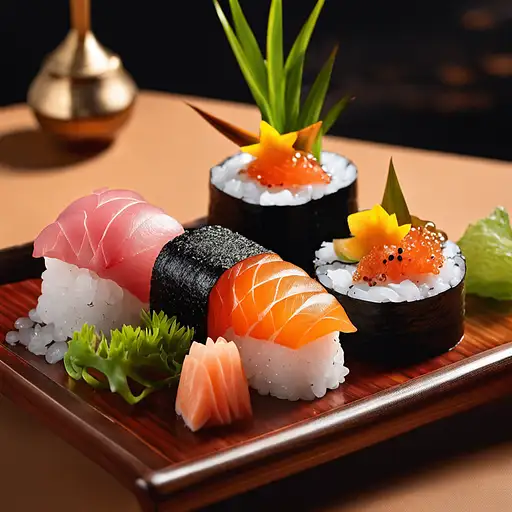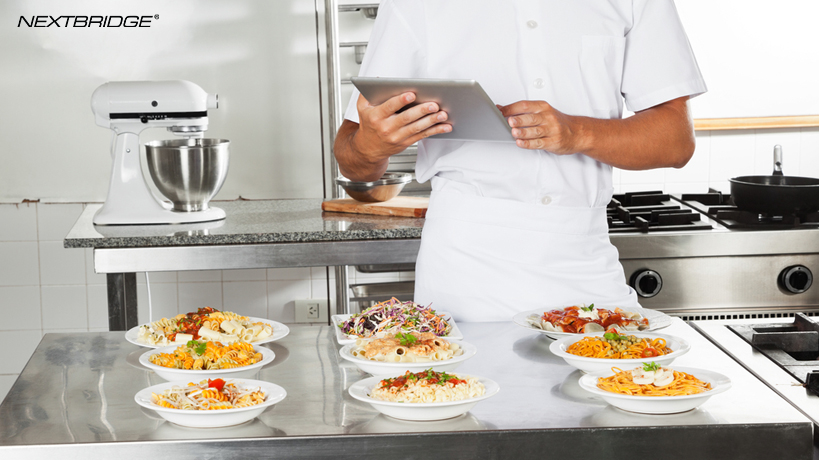In the dynamic landscape of the culinary world, a new concept has been stirring up excitement and curiosity among food enthusiasts and industry professionals alike.
This concept, aptly dubbed “thestaurant,” represents a unique fusion of gastronomy and cutting-edge technology, reshaping the traditional dining experience in ways previously unimaginable.
The Emergence of Thestaurant
The rise of thestaurants is a testament to the dynamic interplay between technological advancement and evolving consumer preferences. In recent years, the rapid proliferation of smartphones, tablets, and other digital devices has transformed the way individuals interact with the world around them, including their dining experiences. Modern consumers seek seamless, personalized experiences in every facet of their lives, and the dining industry is no exception. The emergence of thestaurants can thus be seen as a natural response to this growing demand for innovation and customization in the culinary landscape.
Moreover, the advent of social media and online review platforms has democratized the restaurant industry, empowering consumers to share their dining experiences and discover new establishments with unprecedented ease. In this era of instant connectivity and information sharing, diners are increasingly discerning in their choices, gravitating towards establishments that offer not only exceptional cuisine but also memorable and engaging experiences.
Digital Integration in Thestaurants
At the heart of thestaurants lies a commitment to digital integration, transforming the traditional dining experience into a seamless and interactive journey.
Interactive menus and ordering systems are among the most prominent features of thestaurants, offering patrons the opportunity to explore culinary offerings in a dynamic and engaging manner.
Through intuitive touchscreen interfaces or mobile applications, diners can browse through a diverse array of dishes, complete with vivid descriptions, tantalizing images, and even virtual simulations of the final presentation.
This digital integration extends beyond the ordering process, encompassing every aspect of the dining experience.
Tableside tablets or interactive displays may provide patrons with real-time updates on the status of their orders, offer recommendations based on their past dining history, or even facilitate direct communication with the kitchen staff.
By leveraging technology in this manner, thestaurants aim to enhance customer satisfaction, streamline operations, and foster deeper engagement with their clientele.
Read Also: All Info About https://technolotal.org
Innovations in Culinary Craft

In the kitchens of thestaurants, chefs are not merely cooks but culinary innovators, pushing the boundaries of gastronomic exploration through the use of cutting-edge technology.
State-of-the-art appliances, precision cooking techniques, and culinary innovations converge to create dishes that are as visually stunning as they are delectable.
From sous-vide immersion circulators that ensure precise temperature control to molecular gastronomy kits that unlock new realms of flavor and texture, thestaurants represent the vanguard of culinary experimentation.
Moreover, the advent of 3D food printing technology has revolutionized the way chefs conceptualize and create their culinary creations.
With the ability to fabricate intricate shapes and structures from edible materials, 3D food printers empower chefs to unleash their creativity in ways previously unimaginable, transforming ordinary ingredients into works of art that delight the senses and stimulate the imagination.
Personalization and Data Analytics
In the age of big data and artificial intelligence, thestaurants harness the power of data analytics to gain valuable insights into customer preferences, dining trends, and ingredient sourcing.
Through sophisticated algorithms and machine learning techniques, these establishments can analyze vast amounts of data in real-time, allowing them to anticipate demand, optimize menu offerings, and deliver personalized recommendations tailored to the unique tastes and preferences of each patron.
By leveraging data analytics in this manner, thestaurants not only enhance the customer experience but also drive operational efficiency and profitability.
From menu engineering and pricing optimization to inventory management and supply chain logistics, data-driven insights enable thestaurants to make informed decisions that maximize value for both customers and stakeholders alike.
Seamless Integration of Technology and Hospitality
The hallmark of thestaurants lies in their seamless integration of technology and hospitality, blurring the lines between the physical and digital realms to create immersive dining experiences that resonate with modern diners.
Interactive menus and ordering systems, personalized recommendations, and real-time communication channels are just a few examples of how technology enhances every facet of the dining journey, from the moment patrons step through the doors to the final bite of their meal.
By embracing innovation and embracing innovation, thestaurants bridge the gap between traditional hospitality and cutting-edge technology, redefining our expectations of what it means to dine out in the digital age.
Redefining Culinary Creativity through Innovation

Read Also: heardle 60s || Everyting You Need To Know
In the kitchens of thestaurants, chefs are empowered to redefine culinary creativity through innovation. Advanced cooking appliances, molecular gastronomy techniques, and 3D food printing technology enable chefs to experiment with new flavors, textures, and presentations, pushing the boundaries of gastronomic exploration.
By embracing technology as a tool for culinary innovation, thestaurants inspire chefs to think outside the box and create dishes that captivate the senses and ignite the imagination.
Navigating the Challenges of Technological Advancement
While thestaurants represent a bold step forward in the evolution of dining, they also face challenges associated with technological advancement.
Concerns about data privacy, job displacement, and the erosion of traditional culinary skills loom large in discussions surrounding the impact of technology on the restaurant industry.
As thestaurants continue to proliferate, it is essential for stakeholders to address these challenges thoughtfully and proactively, ensuring that technology enhances rather than detracts from the human experience of dining out.
Immersive Dining Experiences
Beyond the realm of food preparation, technology also plays a pivotal role in shaping the ambiance and atmosphere of the dining space itself.
Through immersive technologies such as augmented reality (AR) and virtual reality (VR), patrons can embark on culinary journeys that transport them to distant lands, exotic locales, and fantastical realms, immersing them in a multisensory experience that transcends the boundaries of traditional dining.
Challenges and Criticisms

However, for all its promise and potential, the concept of thestaurant is not without its challenges and criticisms. Some skeptics argue that the relentless march of technology threatens to overshadow the human element of dining, replacing genuine hospitality and human interaction with cold, impersonal interfaces and automated systems.
Striking a Balance
As the culinary landscape continues to evolve, it is imperative that we strike a delicate balance between embracing technological innovation and preserving the time-honored traditions and artisanal techniques that define the essence of gastronomy.
Conclusion
In conclusion, the rise of thestaurants represents a bold and transformative vision for the future of dining. By harnessing the power of technology to reimagine every aspect of the culinary experience, these establishments are redefining our expectations of what it means to dine out in the digital age.
FAQs
1. What is a “thestaurant”?
A “thestaurant” is a dining establishment that integrates advanced technology into the traditional dining experience.
2. How do thestaurants use technology in their kitchens?

Thestaurants use technology like sous-vide machines, 3D food printers, and robotic chefs to innovate in their kitchens.
3. What challenges do thestaurants face?
Challenges for thestaurants include concerns about data privacy, potential job displacement, and maintaining traditional culinary skills while embracing innovation.
Read Also:
. Unleashing Creative Brilliance: Inspiring Innovation and Breakthrough Thinking in Any Field
. How To Look For A Trusted Delta 8 THC Vendor Near Your Area?
. https://costumbresmexico.com/partido-verde-ecologista/
. https://quesonlosvaloreseticos.com/valores-eticos-en-los-docentes-o-maestros























+ There are no comments
Add yours